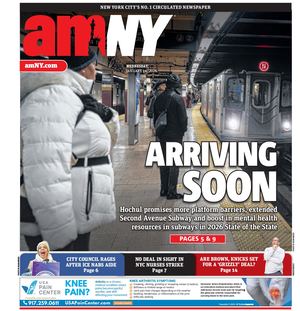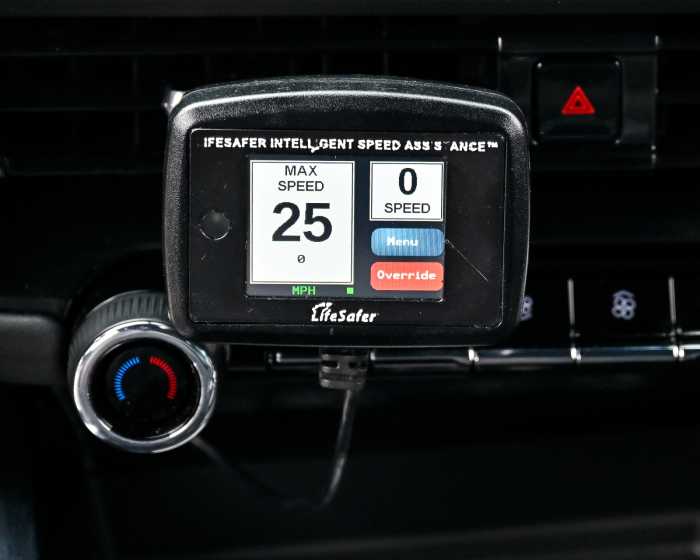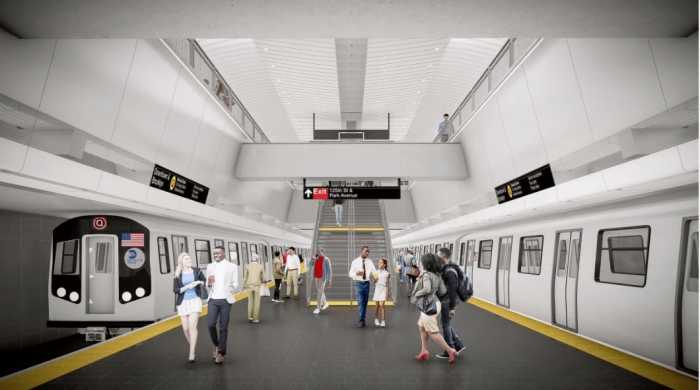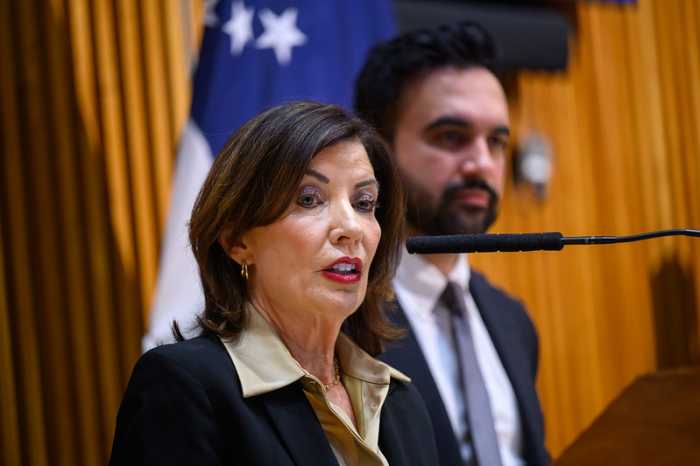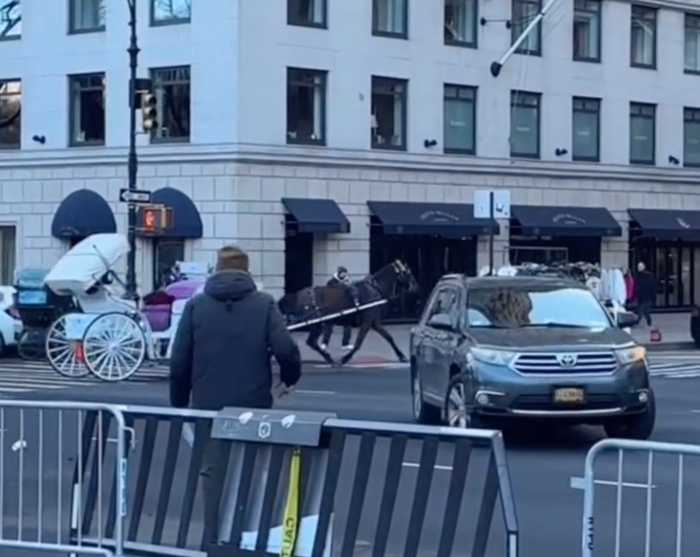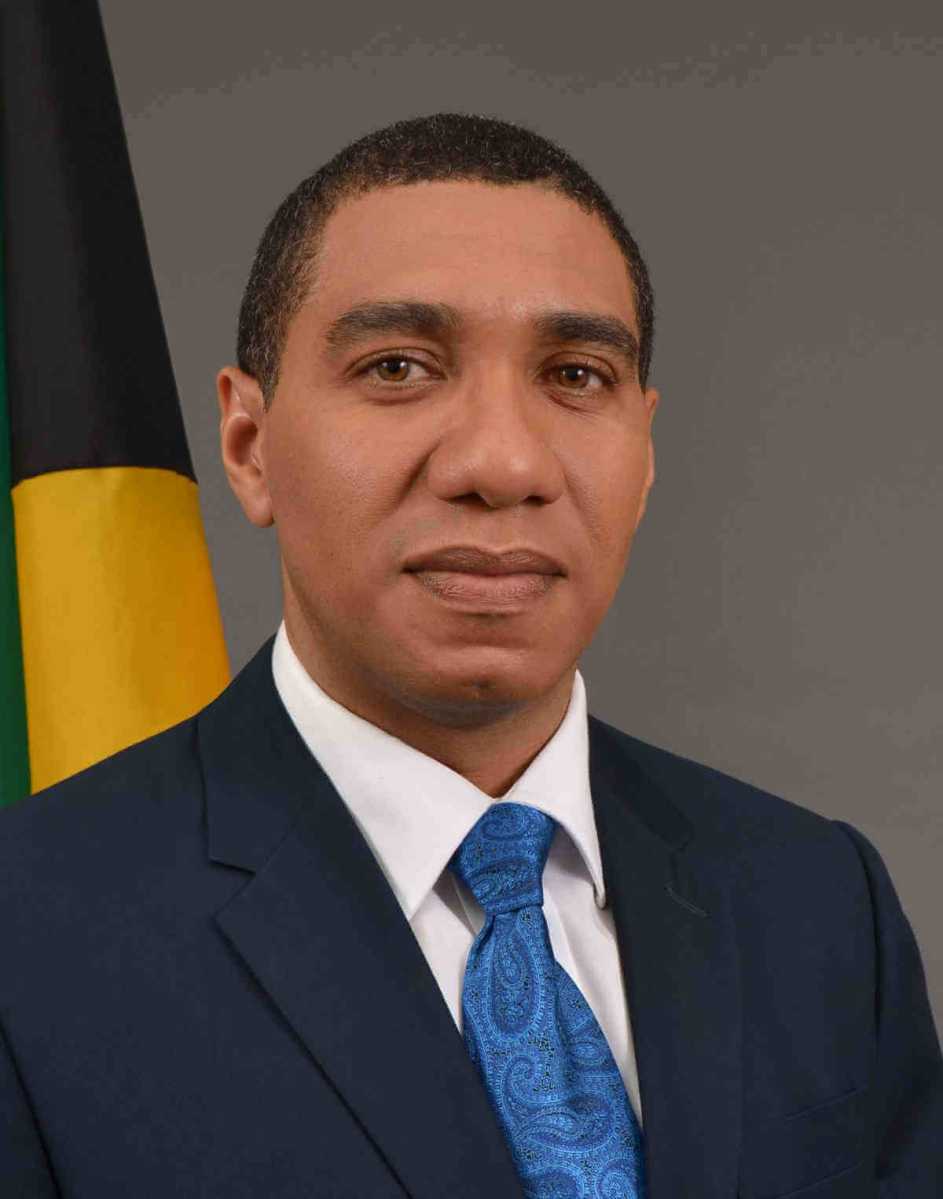The MTA’s flashy new bus fleet may come with Wi-Fi and USB ports, but they lack a feature that’s proved to improve travel times.
None of the 75 blue and yellow buses that rolled out in Queens this May — part of a fleet of 2,042 coming to city streets over the next six years — are equipped with technology known as Traffic Signal Prioritization, or TSP.
The software uses GPS devices on buses to give drivers more green lights and fewer reds. As buses approach intersections, the city’s traffic control center can hold green lights or speed up a red light cycle to prevent idling.
TSP is already in use along several routes in the city and has been able to shave 10 percent to 15 percent off travel times on average, according to data from the city’s Transportation Department.
“We should be utilizing TSP everywhere we can,” said Nick Sifuentes, deputy director of The Riders Alliance, a grassroots transit advocacy group. “It’s is the best thing to speed buses without major infrastructure upgrades.”
With a complete visual makeover, Gov. Andrew M. Cuomo billed the new buses as 21st century rides, praising what he called their Ferrari-like design and millennial accommodations. But TSP taking a backseat to Wi-Fi exemplifies what advocates describe as a backward, frills-first attitude toward enhancing service.
“We look forward to a time when technology to improve service becomes standard and gets higher priority to nonessential enhancements like onboard Wi-Fi,” said Jon Orcutt, Commuinications Director at the nonprofit TransitCenter, who believes that speedier, more reliable service is the key to reversing plummeting bus ridership.
City buses have lost 46 million annual rides since 2010 even though, during that same period, the city added more residents, more jobs and more tourists, according to city data.
In July, TransitCenter joined other advocacy groups to launch the Bus Turnaround Campaign, challenging elected officials and transit agencies to work together to implement enhancements that make buses move faster.
“TSP is a proven tool in New York on our Select Bus Service (SBS) routes and in cities around the world to speed up bus travel times and improve service for riders,” said city DOT spokesman Scott Gastel in an email. “We look forward to working with the MTA to accelerate the deployment of TSP to more bus routes throughout the City.”
Despite early success, wider-scale rollout of TSP on buses has lagged since 2011, when then-Mayor Michael Bloomberg called for 11 routes to utilize the technology by 2013.
At this point, there are five SBS routes using the software: the B44, B46, M15, Bx41, and S79, according to the MTA. Through SBS , the city collaborates with the MTA to use features like dedicated bus lanes, off-board fare payments and, occasionally, TSP to help move buses through gridlock.
As part of SBS upgrades, the MTA expects to bring TSP technology to the Q44 and M60 by the end of the year.
“Moving forward, we will solicit bids to procure software that can be rolled out to all buses at some point in 2018,” MTA spokesman Kevin Ortiz said.
Orcutt, former policy director at the city’s DOT, said there is no reason the tech isn’t a standard bus feature in 2016 besides lack of will.
“I don’t think there is any pressure from MTA leadership to improve bus service,” he said.
When asked about bus speeds at an unrelated news conference last week, Cuomo deferred to MTA chairman Tom Prendergast, who said the agency was working diligently with the city on improvements like TSP and bus lanes.
“We’ve had very aggressive efforts with the last two administrations in the city to DOT to ways which we can improve traffic flow,” he said. “The slowest traffic speeds on the western hemisphere are in Manhattan.”
